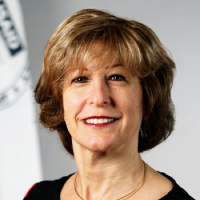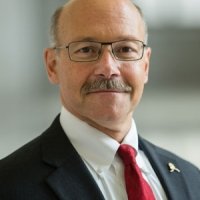Implementing the U.S. Global Water Strategy: A First-Year Review
In November 2017, the U.S. Department of State and the U.S. Agency for International Development released the first U.S. Global Water Strategy. With contributions from more than 17 U.S. government agencies and departments, the Global Water Strategy lays out four interrelated objectives to support a more water secure world: increase access to sustainable safe drinking water and sanitation services, and promote hygiene; protect freshwater resources; promote cooperation on shared waters; and strengthen water governance and financing.
In honor of World Water Day, leaders behind the effort to implement the Global Water Strategy shared where progress has been made, and where there are continued opportunities to support the Global Water Strategy’s objectives.
Selected Quotes
Ambassador Marcia Bernicat
“The overarching goal of the strategy is to create a more water-secure world. Simply put, a world where people have the water they need, where they need it, when they need it, without living in fear of floods or droughts.”
“We have more than 20, as I said, U.S. government agencies working on water in more than 60 countries. We have U.S. experts, working to strengthen and reform UN agencies, and international financial institutions working on water. And we have U.S. diplomats working quietly behind the scenes to support riparian government efforts to cooperate over water.”
“This is not a problem that the United States will solve alone. It is through partnerships, where we can leverage our respective strengths where will be successful. And that’s the message for today. These are hard problems, but they are problems that matter, and so they are problems worth tackling head on. And I’m convinced that by working together, we can achieve a more water-secure future.”
Bonnie Glick
“In USAID, we have a singular mission around the world-- to help countries on their journeys to self-reliance. Ultimately, our goal is to end the need for foreign assistance, to put ourselves out of business. One of the major areas in which we see challenges around the world is in issues associated with water-- the lack of it, the overabundance of it, the governance around it, the filtration of it, and the distribution of it.”
“As we’re sitting here today, we and USAID have just dispatched a team of experts to Mozambique, to address the terrible flooding they’ve had in the last few days and weeks. The damage assessment will surely reflect the need for massive rebuilding of homes, roads and infrastructure, but it will also reflect the likely spread of waterborne diseases as we will collaborate with local officials, as well as with colleagues and many parts of the U.S. government and in regional governments to address some of these issues.”
“Unfortunately, more than two billion people around the world today still lack access to safely managed drinking water, and twice that many do not have properly managed sanitation. The related issues of water stress, either too little or too much, also affects more than two billion people, and it’s projected to rise… On the plus side, the number of countries that are transitioning from immediate relief to longer term development is also on the rise. It’s the very embodiment of progress along the journey to self-reliance.”
Andrew Wheeler
‘I’m here today because I believe, and President Trump believes, that we must do more to address these issues. There will be some who will say this all stems from climate change, but the truth is the water challenges have been around for generations and are causing immediate deaths annually.”
“This past year, the second year of the program [Water Infrastructure Finance and Innovation Act (WIFIA)], we invited an additional 39 projects across the nation to apply for the WIFIA loans that would help finance over ten billion dollars in water infrastructure and create up to 183,000 jobs.”
“Across the government and across the globe, there is a tremendous amount of work being done. My hope today is to draw more attention to it and to bolster it. But my ultimate goal is to see us move from a patchwork of pilot projects to comprehensive solutions. This will take time but it can be done.”
Speakers


US Ambassador-at-Large for Arctic Affairs; Former Chair, US Arctic Research Commission
Hosted By

Environmental Change and Security Program
The Environmental Change and Security Program (ECSP) explores the connections between environmental change, health, and population dynamics and their links to conflict, human insecurity, and foreign policy. Read more
